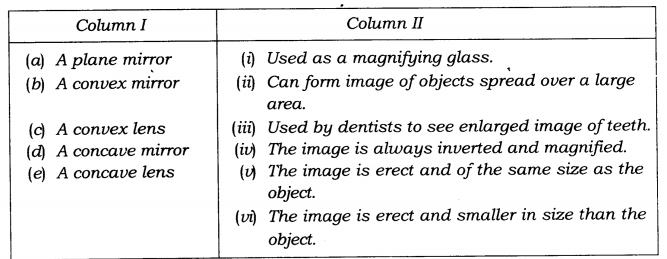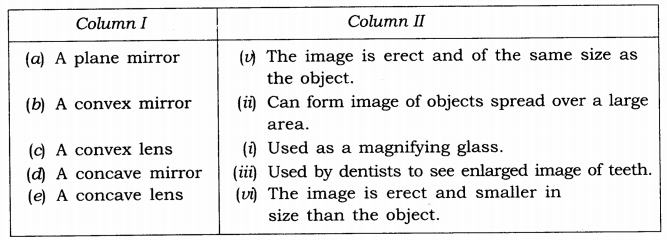EVENTS CONVENT HIGH SCHOOL
12/10/2021 CLASS-8 SESSION 2021-22
SUBJECT : SCIENCE
chapter - 16
lIGHTS
______________________________________
Textbook Questions
Question 1.Suppose you are in a dark room. Can you see objects in the room? Can you see objects out¬side the room? Explain.
Answer:
When we are in a dark room then we cannot see objects in the room. We can see the objects outside the room, because out of the room the light is available and the rays of light can enter our eyes after reflection from the objects.
Question 2.Differentiate between regular and diffused reflection. Does diffused reflection mean the failure of the laws of reflection?
Answer:
| Regular Reflection | Diffused Reflection |
| (i) All the reflected rays are parallel. | (i) The reflected rays are not parallel. |
| (ii) It occurs on a smooth and polished surface. | (ii) It occurs on the rough surface. |
| (iii) Reflected rays are in one direction. | (iii) Reflected rays are scattered in different directions. |
No, diffuse reflection doesn’t mean the failure of laws of reflection.
Question 3.
Mention against each of the following whether regular or diffused reflection will take place when a beam of light strikes. Justify your answer in each case.
- Polished wooden table
- Chalk powder
- Cardboard surface
- Marble floor with water spread over it
- Mirror
- Piece of paper
Answer:
- Regular reflection will take place because the surface is plane and polished.
- Diffused reflection will take place because the surface is rough.
- Diffused reflection will take place because the surface is rough.
- Regular reflection will take place because the surface is smooth and plane.
- Regular reflection will take place because the surface is plane and polished.
- Diffused reflection will take place because the surface is rough.
Question 4.State the laws of reflection.
Answer:
The laws of reflections are:
- The incident ray, the normal and the reflected ray, all lie in the same plane.
- The angle of incidence is equal to the angle of reflection.
Question 5 Fill in the blanks in the following.
(a) A person 1 m in front of a plane mirror seems to be ______ m away from his image.
(b) If you touch your ______ ear with a right hand in front of a plane mirror it will be seen in the mirror that your right ear is touched with _____
(c) The size of the pupil becomes _______ when you see in dim light.
(d) Night birds have _______ cones than rods in their eyes.
Answer:
(a) 2
(b) left, left hand
(c) larger
(d) lesser
Question.6 Choose the correct option in Questions
1.The angle of incidence is equal to the angle of reflection
(a) Always
(b) Sometimes
(c) Under special conditions
(d) Never
Answer:
(a) Always
2. Image formed by a plane mirror is:
(a) virtual, behind the mirror and enlarged.
(b) virtual, behind the mirror and of the same size as the object.
(c) real at the surface of the mirror and enlarged.
(d) real, behind the mirror and of the same size as the object.
Answer:
(b) virtual, behind the mirror and of the same size as the object.




